Contents
Fertilizer “Ammofoska” is more appropriate to use on clay, sandy and peat-bog soils, which are characterized by a deficiency of nitrogenous substances. This type of top dressing is used both to increase the yield of fruit and berry and vegetable crops, and to stimulate the growth of flowers and ornamental shrubs.
What is “Ammofoska”
“Ammofoska” is a complex mineral-type fertilizer that quickly dissolves in water and does not contain nitrates. The absence of aggressive chlorine and sodium in the composition is a big plus, which is often a decisive factor when choosing this type of fertilizer.
The main purpose of “Ammofoska” is the elimination of micronutrient deficiencies. The use of this top dressing for preventive purposes is also justified.
The composition of the fertilizer Ammophoska
The high efficiency and economic profitability of the use of top dressing is due to the chemical composition and the minimum number of ballast elements.
Ammofosk contains:
- Nitrogen (12%). A necessary element that stimulates the growth and development of plants, increasing the yield of fruit and vegetable crops.
- Phosphorus (15%). Biogenic component of feeding, responsible for the synthesis of ATP. The latter, in turn, enhances the activity of enzymes necessary for development and biochemical processes.
- Potassium (15%). The most important element responsible for both increasing yields and improving the quality characteristics of fruits. Additionally increases the immunity of crops.
- Sulfur (14%). This component enhances the action of nitrogen, while not acidifying the soil and almost completely absorbed by plants.
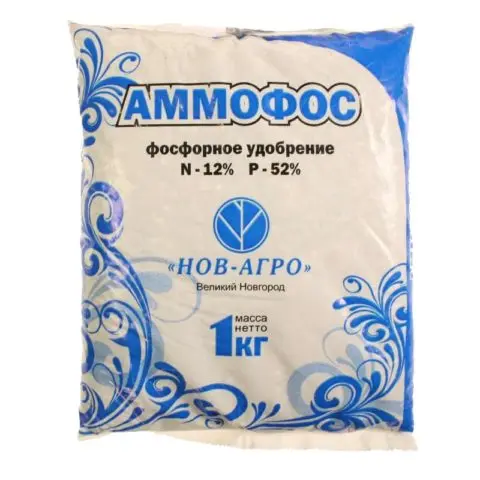
Fertilizer can be used in dry areas where plants need much more nitrogen.
All elements work perfectly in combination, providing the most positive impact on both young seedlings and adult crops.
When to use Ammofoska
This type of complex fertilizer is used almost all year round. The beginning of the period of use is the last decade of March. Top dressing is scattered directly “in the snow” under a bush or crop, as it does not lose effectiveness even in the conditions of the first frost. In autumn, the use of Ammofoska fertilizer in the garden falls on mid-October. It is applied under fruit trees and ornamental shrubs.
What is the difference between Ammophos and Ammofoska
“Ammofoska” is often confused with “Ammophos” – a 2-component fertilizer, which does not contain potassium sulfate. This type of top dressing is used on soil well supplied with potassium. Under the action of ammonia, phosphorus quickly turns into an easily digestible form, due to which it can compete with superphosphate.
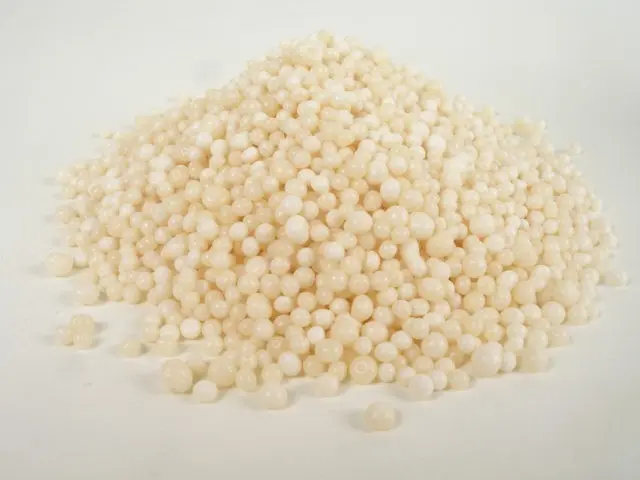
Ammophos contains no potassium
How Ammophoska works on plants
“Ammofoska” is a complex fertilizer, which primarily affects the growth and quality of the crop. Additionally, it has the following effect:
- helps to form a strong root system;
- stimulates the development of shoots and the growth of young shoots;
- increases frost resistance and drought resistance;
- improves the taste of the crop;
- accelerates maturation.
Nitrogen stimulates an increase in green mass and rapid growth of shoots, potassium is responsible for strengthening the immune system and the presentation of vegetables and fruits. Phosphorus increases the rate of formation of ovaries and fruits, as well as the tasting qualities of the latter.
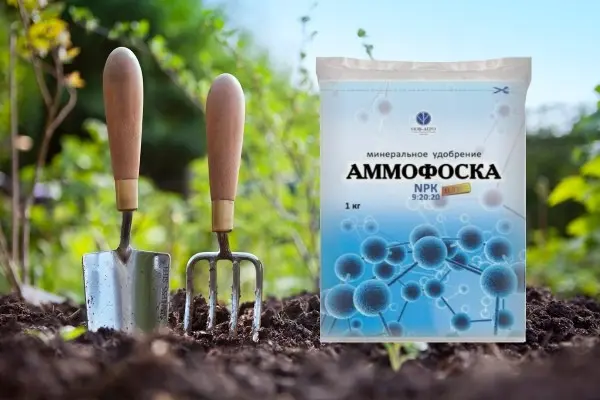
With the help of “Ammofoska” you can increase the yield by 20-40%
Advantages and disadvantages
The choice of this type of top dressing is due to the significant advantages of using fertilizer:
- “Ammofoska” is not toxic. It does not contain chlorine, reduces the level of nitrates in fruits, and does not adversely affect the root system of plants.
- Fertilizer is all-weather, it can be applied both in early spring and late autumn and, of course, in summer.
- Mineral fat is used as the main fertilizer and additional feeding.
- Simple and convenient application. The dosage calculation is elementary.
- The composition of the complex fat is balanced.
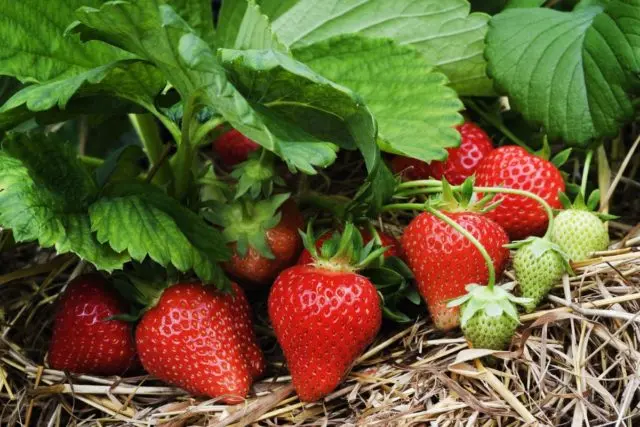
One of the main advantages of “Ammofoska” is the budget cost
Also worth noting:
- ease of transportation;
- economical consumption;
- no need for preliminary soil preparation;
- Can be used on any type of soil.
Gardeners call the main disadvantage of fertilizer the provocation of weed growth when Ammophoska is applied in spring, the change in soil acidity (if the dosage is incorrect), the need to use protective agents (top dressing belongs to the IV hazard class).
During open storage of the opened package, the complex loses nitrogen and part of sulfur.
When and how to apply Ammofoscu fertilizer
The calculation of the consumption rate is very important. It affects not only the activity of growth and crop yields, but also the qualitative properties of the soil.
Calculation of dosage and consumption rates of Ammophoska
The scope of this type of fat is very wide. “Ammofoska” is used both in the pre-sowing period and in the fall before preparing for wintering.
The fertilizer application rates are as follows:
- vegetable crops (except root crops) – 25-30 mg / m²;
- berries – 15-30 mg / m²;
- lawn, flowers, ornamental shrubs – 15-25 mg / m²;
- root crops – 20-30 mg / m².
The application rate of “Ammofoska” for fruit trees directly depends on the age. Under such crops over 10 years old, 100 g of the substance is applied, under young trees (under 5 years old) – no more than 50 g / m².
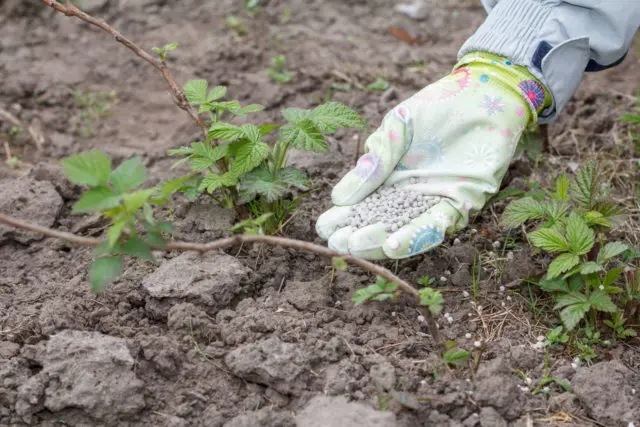
Incorrect dosage can lead to acidification of the soil
In some cases, gardeners use “Ammofoska” in the production of vegetable compost, resulting in a mineral-organic top dressing rich in nitrogenous compounds. This fertilizer is used to resuscitate weak and diseased crops, as well as to enrich depleted soil.
Terms of application of Ammophoska in spring, summer, autumn
“Ammofoska” is one of the earliest fertilizers. Many gardeners apply it in early March by simply scattering the granules over the remaining snow. If desired, the procedure can be repeated in April, when soils still wet after snowmelt do not require additional watering to dissolve the substance.
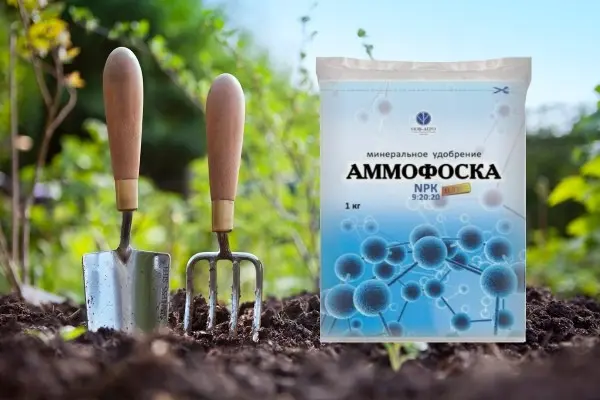
“Ammofoska” is often used on depleted soils and for resuscitation of sick and dying plants
“Ammofoska”, dissolved in water, can be used throughout the summer, fertilizing and feeding both berry and fruit and vegetable crops. In autumn, this fat is applied in order to increase the immunity and winter hardiness of crops, by pouring dry granules under mulch, or using it as part of water-charging irrigation in October.
Instructions for use Ammofoski
The use of Ammofoska fertilizer in the garden is due to its high efficiency. However, there are a number of features that must be taken into account.
For vegetable crops
For greenhouse crops (peppers, tomatoes), application rates can be increased, as there is a shortage of sunlight in greenhouses and, as a result, lower plant immunity. Fungal infections are the most common type of greenhouse plant diseases. The mineral complex stimulates the protective functions of the culture, avoiding the worst scenario.
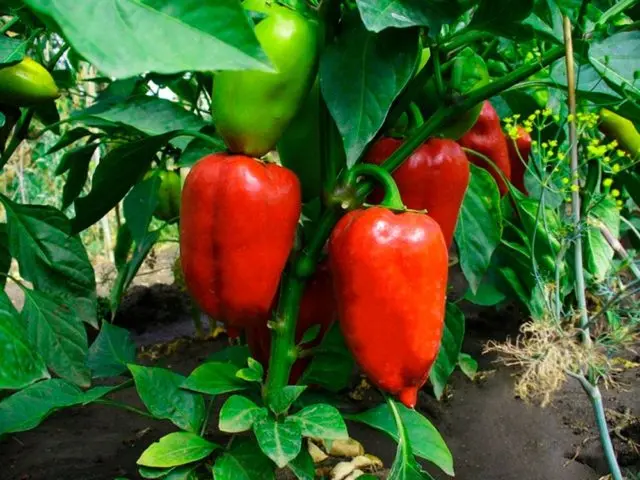
For peppers and tomatoes, “Ammofoska” is often combined with organic
The use of Ammofoska fertilizer for potatoes is necessary primarily because of the high nitrogen content, which affects the growth of root crops. The substance is poured directly into the wells (20 g per 1 hole), without wasting time on additional plowing or composting.
For fruit crops
Berry crops react especially well to Ammofoska. Top dressing is carried out both in spring and autumn. In the latter case, due to the almost instantaneous dissolution of nitrogen, the crops do not grow before winter.
For strawberries, fertilizer is mixed with ammonium nitrate in a ratio of 2 to 1. In the spring, completely dissolved, nitrogen compounds stimulate growth, and potassium stimulates early ripening. Thanks to this, the harvest can be harvested 2 weeks earlier.

Thanks to fertilizer, strawberries ripen ahead of time
Grapes are fertilized 14-15 days before flowering (50 g of dry matter per 10 l), 3 weeks after and in preparation for winter. It is undesirable to apply “Ammofoska” before the ripening of the crop, as this will lead to crushing of the berries.
Fruit trees are fertilized in the fall by pouring the solution into the near-stem circle. After that, an additional water-charging irrigation (up to 200 l) is carried out, which contributes to the complete dissolution of the active substances. They do this in order to help the tree survive the winter as easily as possible, especially if severe frosts are expected.
In the spring, “Ammofoska” is brought under a pear, laying fertilizer in pits 30 cm deep. Sulfur helps the crop absorb nitrogen, which, in turn, stimulates the growth of the root system and green mass. Phosphorus is responsible for the juiciness, size and taste of fruits.
For lawns
Fertilizer for the lawn is applied in 2 ways:
- Before planting, dry granules are “dug in” to a depth of 5-6 cm.
- After waiting for the first shoots, spray with an aqueous solution.
In the second case, the appearance of the lawn is significantly improved.

Spraying “Ammofoska” increases the brightness of the color and density of lawn grass
For flowers
Flowers are fertilized most often in spring. Nitrogen is especially important for the cultures of this species, therefore, “Ammofoska” for roses is not sprayed on the soil surface, but is introduced into the soil to a depth of 2-5 cm.
Another method is to sprinkle top dressing under the mulch, which “locks” nitrogen and maintains the required level of soil moisture. When applied correctly, fertilizer can affect the splendor and duration of flowering.
For ornamental shrubs
In spring, ornamental shrubs are fertilized with complex fertilizer immediately after the snow melts. To do this, a small groove is dug around the culture, where dry granules (50-70 g) are laid, after which everything is covered with soil.
Safety Precautions
“Ammofoska” is classified as a hazard class IV substance, which requires caution when using it. The main condition is the use of protective equipment (glasses and gloves).
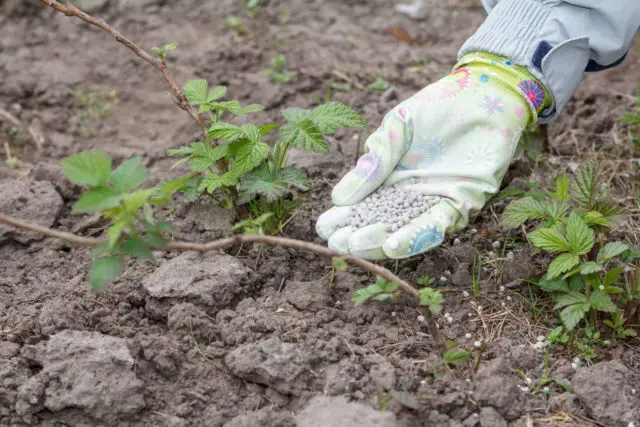
It is necessary to apply fertilizer of IV hazard class with gloves
Storage Rules
An open package of fertilizers of this type cannot be stored for a long time due to the “volatility” of one of the main components – nitrogen. In extreme cases, the remaining fertilizer can be poured into a dark glass jar with a tightly screwed lid. It is necessary to store top dressing away from sunlight.
Conclusion
Fertilizer Ammofosk can be applied at any time of the year on all types of soil. This universal fat is suitable for most crops and has a complex effect on the plant, affecting not only the growth of the vegetative mass, but also the taste and harvest time.
Ammophoska fertilizer reviews
Almost all reviews of Ammofosk are positive.









